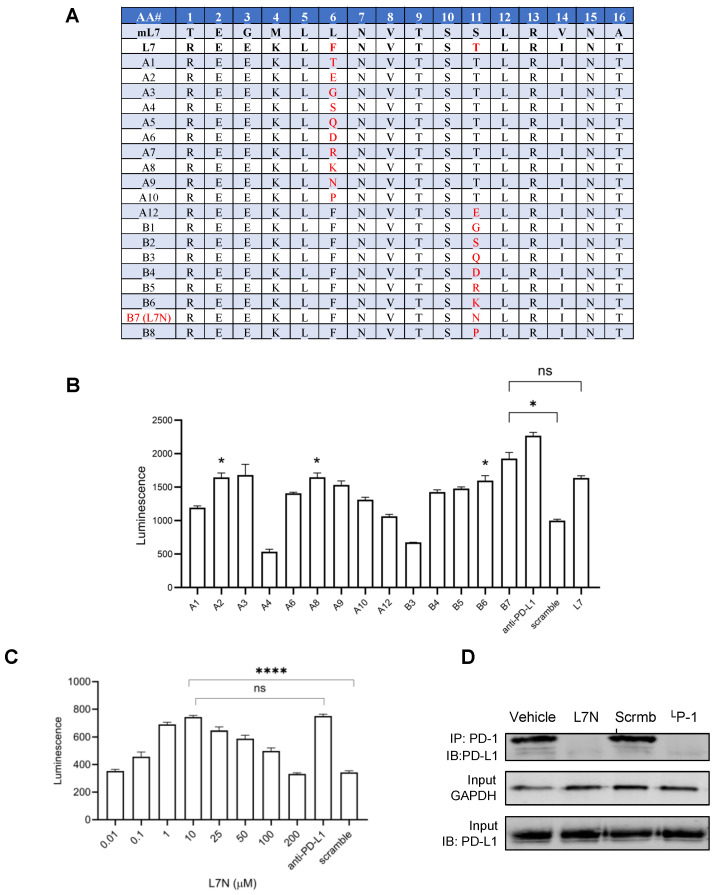Figure 2.
Optimization of efficacy and solubility for L7. (A) L7 analogues (from human PD-L1) generated by substituting the non-conserved hydrophobic residues (i.e., AA #6 and #11) with hydrophilic residues. mL7, an analogue of L7 corresponding to mouse PD-L1. (B) Efficacy of L7 analogues from (A) in activating PD-1-suppressed T cells. Shown are the NFAT luciferase signals in the presence of 50 μM peptide. L7 and anti-PD-L1 antibody (5 μg/mL) were included as a positive control, while a scrambled L7 peptide was included as a negative control. *, p < 0.01 compared to the scrambled peptide; ns, not significant; one-way ANOVA test. (C) Dose response of peptide L7N determined using the same assay as in (B). The optimal concentration for L7N was 10 μM. ****, p < 0.00001; one-way ANOVA test. (D) L7N, but not its scrambled version, effectively blocked the PD-1-PD-L1 interaction in the JT-PD1/CHO-PDL1 coculture. The positive control peptide, LP-1, was based on Chang et al. (reference [10]). Concentration of peptides used: 10 μM.

